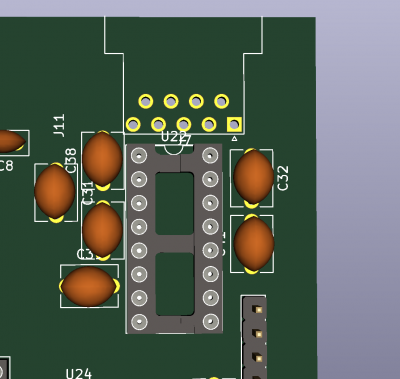Michael wrote:
backspace119 wrote:
In other news, I sourced new 1uf caps that are non polarized, but I'm probably going to switch back, because the footprints are actually larger:

If that's an RS232 level shifter IC then please note that the MAX202, ST202, or MAX232A transceivers are the same as a MAX232 transceiver but they can use 0.1-uf monolithic ceramic caps... You could install them under the IC in the open area of the machined pin IC socket...
Attachment:
MAX202.jpg
Thanks, I noticed that on the datasheet, but I didn't see the 232a on mouser, I'll look again though, because that could save some space.
In other news, I've been considering a monostable circuit for driving RDY low when talking to the EEPROM. My plan is to drop it for 150ns, which should be enough time for most EEPROMs (a couple take 200, but I'll stay away from those). I found
this AHC series IC that seems to be right for the job. If my math is right, I'll need a 10pf cap, and a 3.3kOhm resistor to achieve 150ns. (I originally was planning >1000pf cap to keep it simple with a k factor of 1, but there's a note in there stating to be careful with large value caps, as they can damage the chip if the power supply cuts off too quickly, so instead I went for the smallest cap possible, and a k factor of 4.5)







